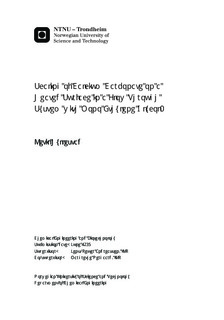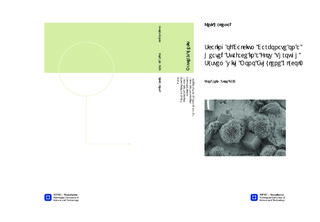| dc.contributor.advisor | Andreassen, Jens-Petter | nb_NO |
| dc.contributor.advisor | Nergaard, Margrethe | nb_NO |
| dc.contributor.author | Hyllestad, Ketil | nb_NO |
| dc.date.accessioned | 2014-12-19T13:23:59Z | |
| dc.date.available | 2014-12-19T13:23:59Z | |
| dc.date.created | 2013-09-19 | nb_NO |
| dc.date.issued | 2013 | nb_NO |
| dc.identifier | 649578 | nb_NO |
| dc.identifier | ntnudaim:9891 | nb_NO |
| dc.identifier.uri | http://hdl.handle.net/11250/248442 | |
| dc.description.abstract | Efficiency of industrial heat exchangers can be reduced due to precipitation of a solid mineral layer called scale. Reversibly soluble salts such as calcium carbonate are less soluble at elevated temperatures and therefore precipitate more easily in these units. The effect is also seen in oil wells, pipelines and desalination plants among others.The aim of this work was to determine growth rates and polymorphic composition of the formed scale at a range of inlet supersaturations, heated medium temperatures and solvent compositions. Experimental setup was prepared to study the effect of these parameters in a continuous flow system. An internally heated U-tube was placed in a reactor with constant stirring and supersaturation. Inlet/outlet temperature of the tube was continuously logged along with pH and bulk temperature.A reduced heat transfer from the tube to the bulk solution was observed with an increased thickness of the scaled layer. The overall growth rate of aragonite decreased by 3.8% from 5.36±0.18?10-6 kg/m2?s to 5.16±0.12?10-6 kg/m2?s when the experimental duration was changed from 90 to 180 minutes in a water solvent. An inlet supersaturation of 6.0 and a tube temperature of 90°C were used in these experiments. The decrease in crystal growth was caused by a reduced skin-temperature with reduced heat transfer. The growth rate was reduced to 2.6±0.3?10-6 kg/m2?s when the inlet supersaturation was reduced to 4.5 at comparable conditions and a time magnitude of 180 minutes. XRD- and SEM-analyses indicated a change from almost exclusively aragonite to a mixed polymorphic composition when the tube temperature was changed from 90°C to 50°C. Experimental results proved that there is a prolonged initiation period for scale growth in monoethylene glycol solutions compared to a pure de-ionized water solvent. To study the growth of scale in a MEG solution, the experimental procedure was changed to include a pre-scale period where a uniform layer of aragonite was formed. Subsequent growth could then continue with variable solvent composition on the outside of this layer.Heat transfer from the heated medium into the bulk solution was observed to decrease with a higher presence of MEG in the solvent, which elevated the skin-temperature. Thickness of the scaled layer was found to have a more profound effect on crystal growth in a combined water/MEG solvent than in a water solution. The results showed that there was a notable decrease in mass deposit with an elevated solvent concentration of MEG. Mass deposits per area after the pre-scale period were 0.90 mg/cm2 (50wt% MEG), 0.53 mg/cm2 (70wt% MEG) and 0.36 mg/cm2 (90wt% MEG) at an inlet supersaturation of 6.0 and a tube temperature of 90°C. This experimental setup allowed for a separate control of the kinetic and thermodynamic contributions to scale growth. The reduced deposition at comparable levels of supersaturation was caused by reduced growth kinetics due to the increased viscosity in a solvent with MEG. | nb_NO |
| dc.language | eng | nb_NO |
| dc.publisher | Institutt for kjemisk prosessteknologi | nb_NO |
| dc.title | Scaling of Calcium Carbonate on a Heated Surface in a Flow Through System with Mono Ethylene Glycol. | nb_NO |
| dc.type | Master thesis | nb_NO |
| dc.source.pagenumber | 147 | nb_NO |
| dc.contributor.department | Norges teknisk-naturvitenskapelige universitet, Fakultet for naturvitenskap og teknologi, Institutt for kjemisk prosessteknologi | nb_NO |

